St James Church, completed in 1836, is Delhi’s oldest church.
Today, it is a prominent landmark of Kashmiri Gate, visited by a few hundred people daily for its services. But, over the years, this church and its sprawling grounds have been witness to some of the most remarkable events in Delhi’s history.
During the 1800s, when the British Resident at the Mughal court controlled Delhi’s power politics, and the city played host to a swelling number of Europeans and their families, all adding to the rich diversity of Delhi’s life – St James Church was their focal place for worship and weddings and social gatherings. A busy British hub in the middle of Mughal Delhi.
And when this world was rudely shattered by the Revolt of 1857, these grounds saw much bloodshed and heavy fighting between the two sides. Rebel sepoys took control of the church, inflicting considerable damage. In fact, the copper ball on top of the dome was used by the sepoys for shooting practice, and what you see now is a replacement and not the original!
Even after the dramatic events of 1857, once the British had retaken the city and dissolved the East India Company, making India their direct colony with the British Queen as Empress of India, St James Church continued to retain its importance. Several Viceroys of India came to pray here, before the Cathedral Church of the Redemption near North Avenue was built in 1931. And, there was a time when its guests included Queen Elizabeth (1961) and the Archbishop of Canterbury (1995).
Today, you can get a sense of this awesome backstory by walking the grounds of St James Church, taking in its beauty, its history and its sense of violent death. For, buried on these grounds are some movers and shakers of Delhi’s East India Company, men who had lived remarkable lives and died untimely deaths.
These include the graves of Colonel James Skinner and his family of fourteen wives and children. Also buried here are British Commissioners of Delhi, William Fraser and Thomas Metcalfe, and a host of other larger-than-life personalities who added so much to Delhi’s society and history.
St.James Church was built by Colonel James Skinner, who pledged to build it while lying wounded in a battlefield. Skinner paid for the construction himself, spending a small fortune of ninety-five thousand rupees of his own money. He is buried here in the church that he built, his gravestone just below the church’s alter.
Skinner was one of the most remarkable and popular characters of British India. He was born of mixed parentage, his father Scottish and his mother a Rajput princess. Skinner’s mixed blood meant that he always moved between two worlds.
When he was just twelve years old, Skinner’s mother committed suicide. He was sent to a boarding school, and from there became a printer’s apprentice. Skinner hated this work and ran away in a few days, making his way to Kanpur where he joined the service of the Maratha army. This started Skinner’s life as a soldier, and he never looked back.
Skinner fought for both the Marathas and the British in his celebrated career. He started the Skinners Horse Cavalry Regiment, which is still part of the Indian Army. Venerated as Sikander Sahib, Skinner famously knew the names and villages of each of his soldiers. His friends mention him carrying “…dinner with his own hands to the lowest drummer in the camp” and of his habit of placing an old spoon on his breakfast table “to remind him of his origin and early days”.
Despite his many successes on the battlefield, Skinner faced prejudices throughout his life. The fact that he was dark-skinned, spoke fluent Persian and had domestic habits more Indian than British went against him.
As he writes, “race, indeed, has been my fall. In the Mahratta service from 1796 to 1803, I had always a well-grounded hope of rising in rank and fortune; no question was ever raised as to my birth there. When I entered the British service, I believed that I gained a field in which the fruits of zeal and fidelity would be matured and reaped in perfection; and no exertions on my part were spared to forward this object. I imagined myself to be serving a people who had no prejudices against caste nor colour. But I found myself mistaken…”
Later in life, Skinner was granted the jagir of Hansi where he settled down. He was a prolific family man, marrying fourteen wives and fathering many children, some of whom are buried in a special enclosure on these very grounds.
Skinner died in Hansi and was buried there. Later, his body was disinterred and bought here to St. James Church. When his body arrived at these grounds, a huge crowd gathered to receive him. “None of the Emperors were ever bought into Dehlee in such state as Secunder Sahib”.
On January 19, 1842, Skinner was buried with full military honors beneath the alter of the church that he had built.
The epitaph on William Fraser’s tomb was penned by James Skinner, his great friend.
“…the remains interred beneath this monument were once animated, by as brave and sincere a soul as was ever vouchsaved to man by his creator…..”.
William Fraser was one of the original “white Mughals”, a man much in love with India and its ways. Appointed by the East India Company as British Resident to the Mughal Emperor Bahadur Shah Zafar’s court, he thrived in Delhi, quickly adopting its refined behaviors and becoming great friends with the famous poet Ghalib.
Mildred Archer, the author of a book on the Frasers, writes …“William lived in semi-Indian style: he was a vegetarian, and at a time when most British were clean shaven, he sported a great beard. When Lady Nugent, wife of the Commander-in-Chief, met William with his friend the Hon. Edward Gardner near Delhi in 1811, she was shocked by their beards and the fact that they had given up eating pork or beef.”
Fraser was born in Inverness in the north of Scotland. His father’s estate became heavily mortgaged as a result of poor investments, and so, the young William was sent to India at the age of seventeen “expressly to repair the family’s fortunes.” He was followed in time by all four of his brothers, though only one of them – the eldest James Fraser – survived to return.
In India, Fraser always had the motive of making money to send home. Apart from the handsome salary he received as the British Resident, Fraser started a business breeding horses. India was a ready market for horses for civil and military use, with the business being dominated by Afghan horse dealers. Fraser managed his contacts and friendships wisely to break into the market and make good profits. He used his friend James Skinner’s farm in Hansi for horse breeding and formed a close business bond with his Indian partner, Nawab Ahmad Baksh Khan.
William Fraser was a regular in Delhi’s social circuit, frequently attending mushairas and throwing parties. If he were alive today, Fraser would qualify as a regular page three celebrity. He lived close to St. James Church (his original house still stands just behind the church, now the Office of Chief Engineer Northern Railways). Though Fraser was never married, he had several Indian mistresses or bibis of which his favorite, Amiban, appears in several paintings he had commissioned from Delhi artists.
On the evening of March 22, 1835, on his way home from a party, William Fraser was attacked and killed.
The murder shocked Delhi. Wild rumors began circulating in the city. An investigation was quickly started, but the crime scene itself had no clues, only “a jumble of hoof marks in the dust”. Ultimately, it was revealed that Fraser’s murderer was an assassin hired by the Nawab of Loharu, Shamshuddin Ahmad Khan. This was a cruel twist of fate for Fraser. Shamsuddin was the eldest son of Frasers’ good friend and business partner, Nawab Ahmad Baksh Khan, and had clashed with Fraser over the inheritance of Loharu estate. In a trial that took Delhi by storm, Shamshuddin was convicted and hanged.
While Fraser is buried in St. James Church in Delhi, his mother built a granite memorial on the grounds of the family home in Scotland. Both memorials still stand today, in remembrance of a remarkable life well lived.
(The next British Resident at the Mughal Court, builder of the fabulous Matka Kothi, and a closet eccentric. Born in London in 1795. Poisoned to death in Delhi in 1853)
Across the expanse of the lawn is another significant tomb to another of Delhi’s fascinating leading lights, the last resting place of Thomas Metcalfe.
Thomas Metcalfe arrived in Delhi in 1813 at the age of eighteen and lived in this city for forty years. He took over from Fraser as British Resident at the Mughal court, and it was he who successfully investigated Frasers murder and had Shamshuddin Khan hanged in a great show of public justice.
Fraser and Metcalfe could not have been more different from each other. While Fraser loved Indian customs and the local lifestyle, Metcalfe was the ultimate British stiff upper lip. A finicky and fastidious man, he was always “in the pink of tidiness in his appearance and habits”, his clothes cut by his London tailor Pulford of St. James Street and sent out to him regularly every year. He was clearly not one to wear native dresses or embrace Indian traditions like Fraser before him.
Thomas Metcalfe’s daughter Emily grew up in Delhi and was married in this church. She has left us a wonderful account of her father’s disciplined and routine-bound life in her diaries.
“…He always got up at five o’clock every morning and having put on his dressing gown he would go into the verandah and have his chota haziri (small breakfast). He used to take a walk up and down the verandah, and his different servants came at that time to receive their orders of the day. At seven o’clock he would go down to the swimming bath….then, having dressed and having prayers in the oratory, he was ready for breakfast at eight o’clock punctually…..after breakfast, his hookah was brought in and placed behind his chair…he smoked for about an hour…went to his study to write letters until the carriage was announced. This always appeared punctually at ten o’clock beneath the portico, and he passed through a row of servants on his way to it – one holding his hat, another his gloves, another his handkerchief, another his gold-headed cane…he returned from office every day at half-past two, having established the custom of dinner at three o’clock”.
After dinner, ”he sat reading for a time (he had 25,000 books in his library) before going down to the billiard-room. A game of billiards was followed by two hours spent on the terrace contemplating the river. Then it was time for a light supper and the evening hookah. As soon as the clock struck eight he stood up, said good night, and went to bed….”
Obviously, Metcalfe was hardly the sort to mix freely with local Delhi society or indulge in its musahiras and bibis.
However, for all his stubborn Englishness, Metcalfe was smitten by the beauty of Indian heritage, especially the area around Mehrauli about which he writes;
“The ruins of grandeur that extend for miles on every side fill it with serious reflection….the palaces crumbling into dust… the myriads of vast mausoleums, every one of which was intended to convey to futurity the deathless fame of its cold inhabitant, and all of which are now passed by, unknown and unnoticed. These things cannot be looked at with indifference.”
It is in Mehrauli that Metcalfe allowed his inner eccentric to find expression. He built himself a summerhouse near Qutub Minar, adapting the tomb of Muhammad Quli Khan (Emperor Akbar’s foster brother) for the purpose. He converted the central hall above the crypt to be his main dining room, called the tomb-turned-summer home Dilkusha (Delight of the Heart), and surrounded Dilkusha with English style “follies”, many of which still exist in Mehrauli today. Metcalfe even made a small business of this, renting out Dilkusha to honeymooning couples!
Like Fraser before him, Metcalfe too died an unnatural death and is rumored to have been poisoned. Metcalfe had struck a deal with the Mughal Emperor’s son, promising to recognize him as heir in return for the Mughals leaving the Red Fort. He thus fell out with Zeenat Mahal, the ageing Emperor Bahadur Shah’s young wife, who accused Metcalfe of meddling in the palace’s affairs. He may have been poisoned as a result, for he fell ill soon after and died a slow death from “digestive disorder”.
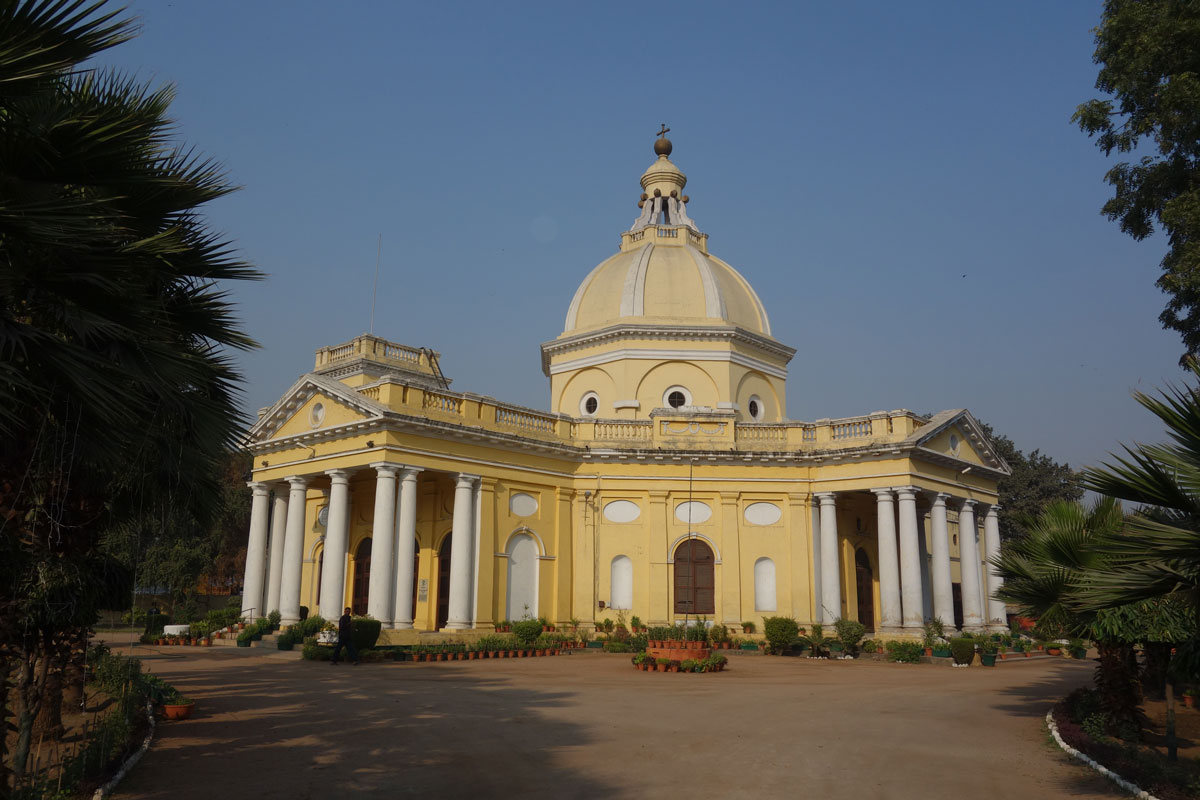 St James Church and Its Sprawling Grounds Are Steeped in History
St James Church and Its Sprawling Grounds Are Steeped in History
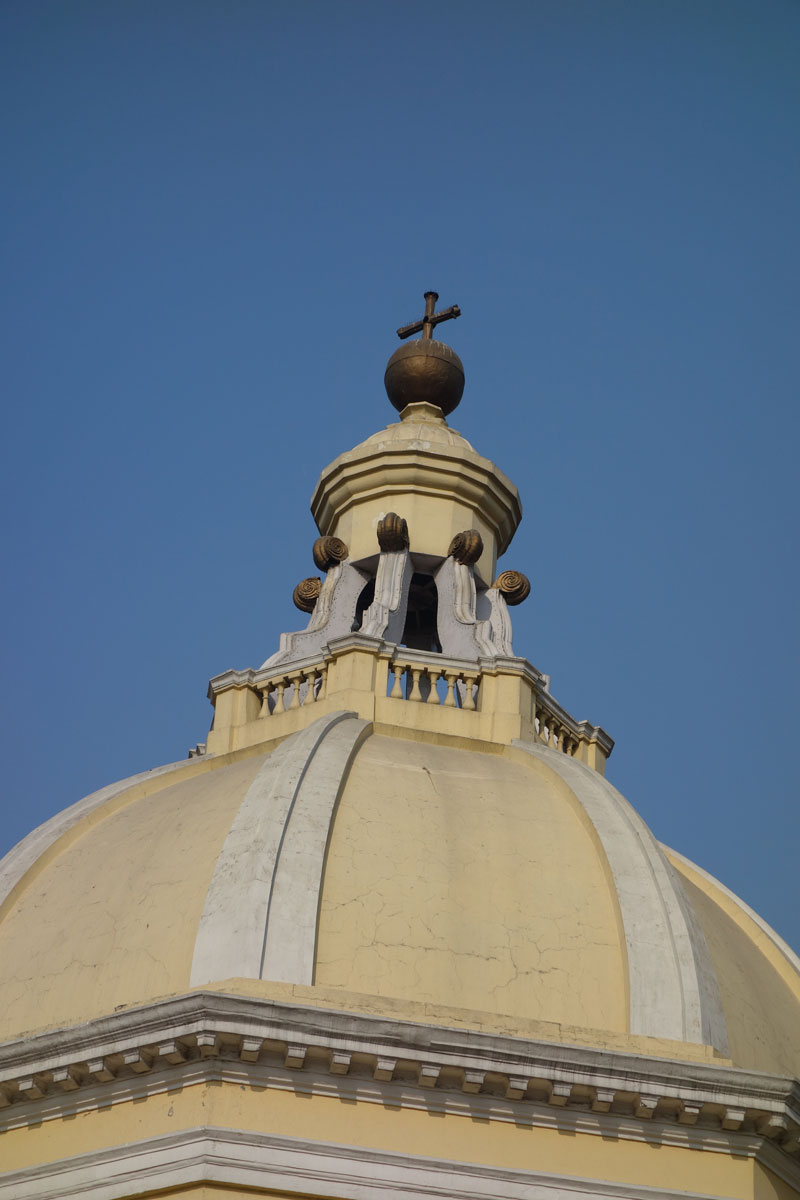 The Copper Ball on the Dome Was Used by Rebel Sepoys for Target Practice!
The Copper Ball on the Dome Was Used by Rebel Sepoys for Target Practice!
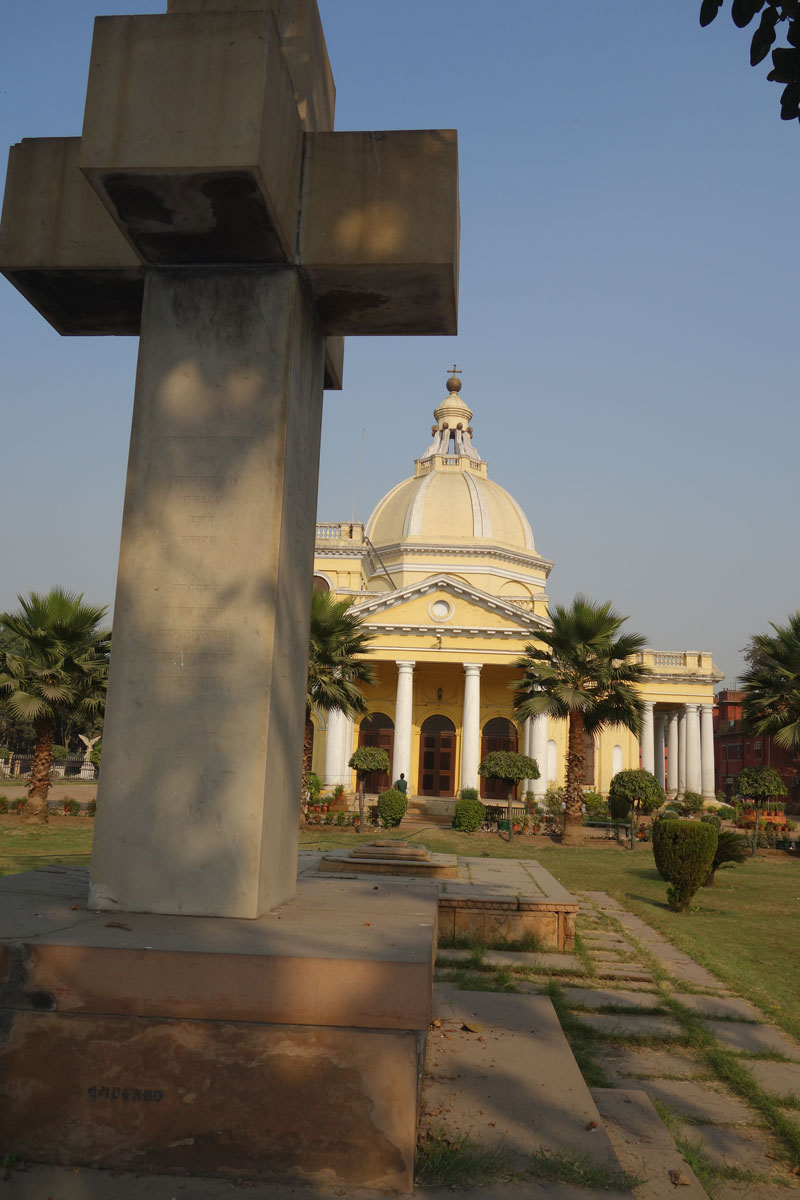 A Cross, in Remembrance of the Many British Who Were Killed at St James Church and in Delhi during the Revolt of 1857.
A Cross, in Remembrance of the Many British Who Were Killed at St James Church and in Delhi during the Revolt of 1857.
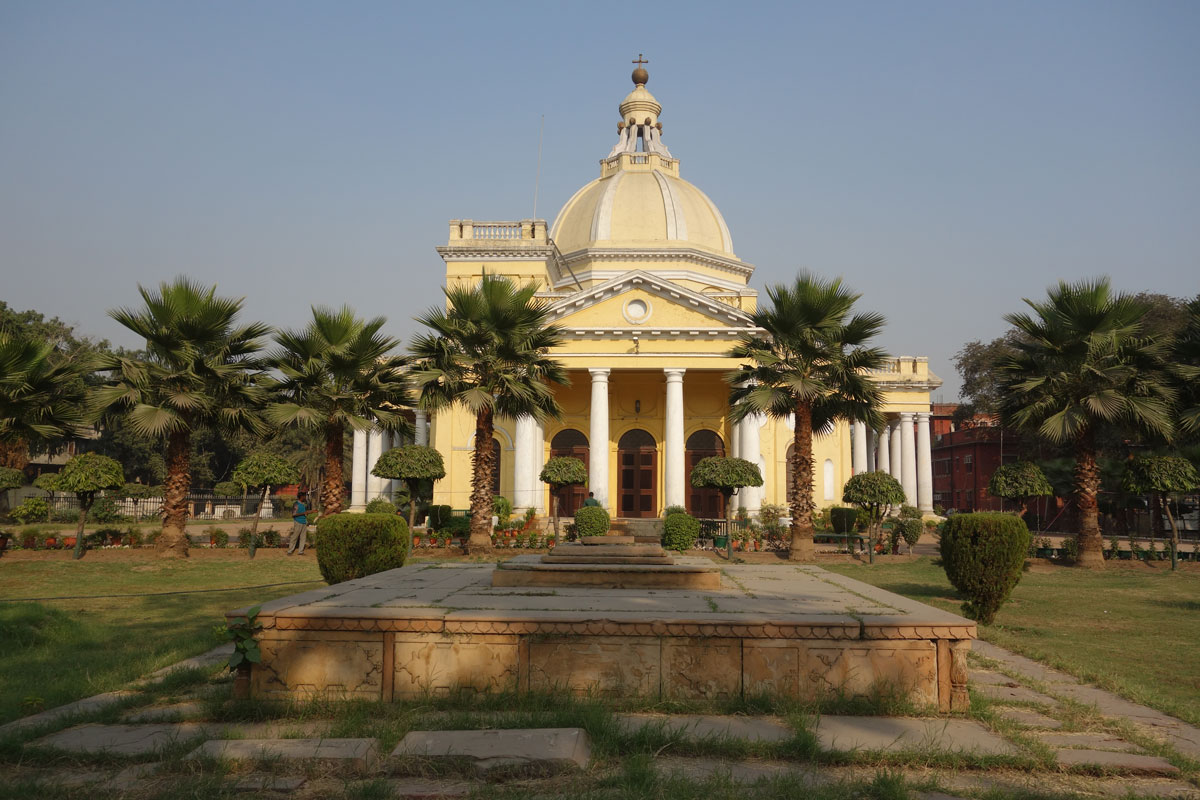 William Fraser’s Grave; a Powerful and Popular Resident of Delhi Who Was Murdered in 1835.
William Fraser’s Grave; a Powerful and Popular Resident of Delhi Who Was Murdered in 1835.
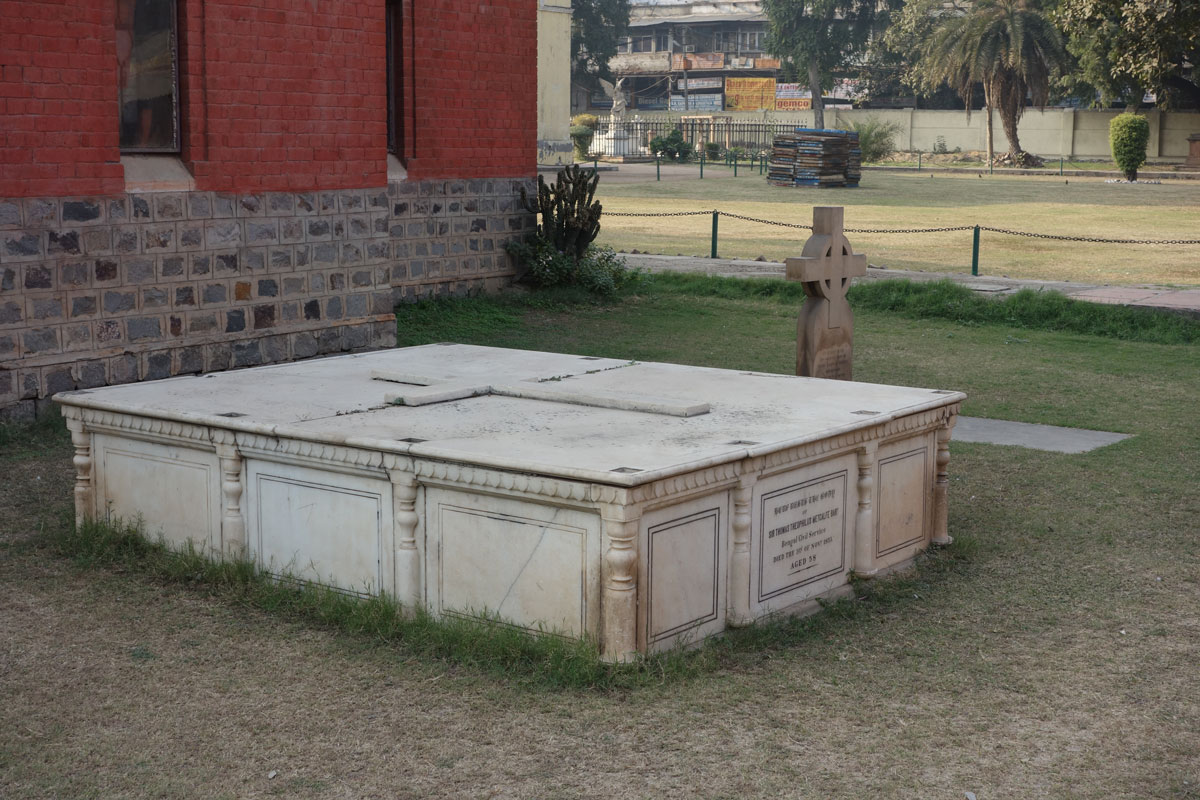 Thomas Metcalfe’s Tomb (A Case of Mughal Poisoning?)
Thomas Metcalfe’s Tomb (A Case of Mughal Poisoning?)
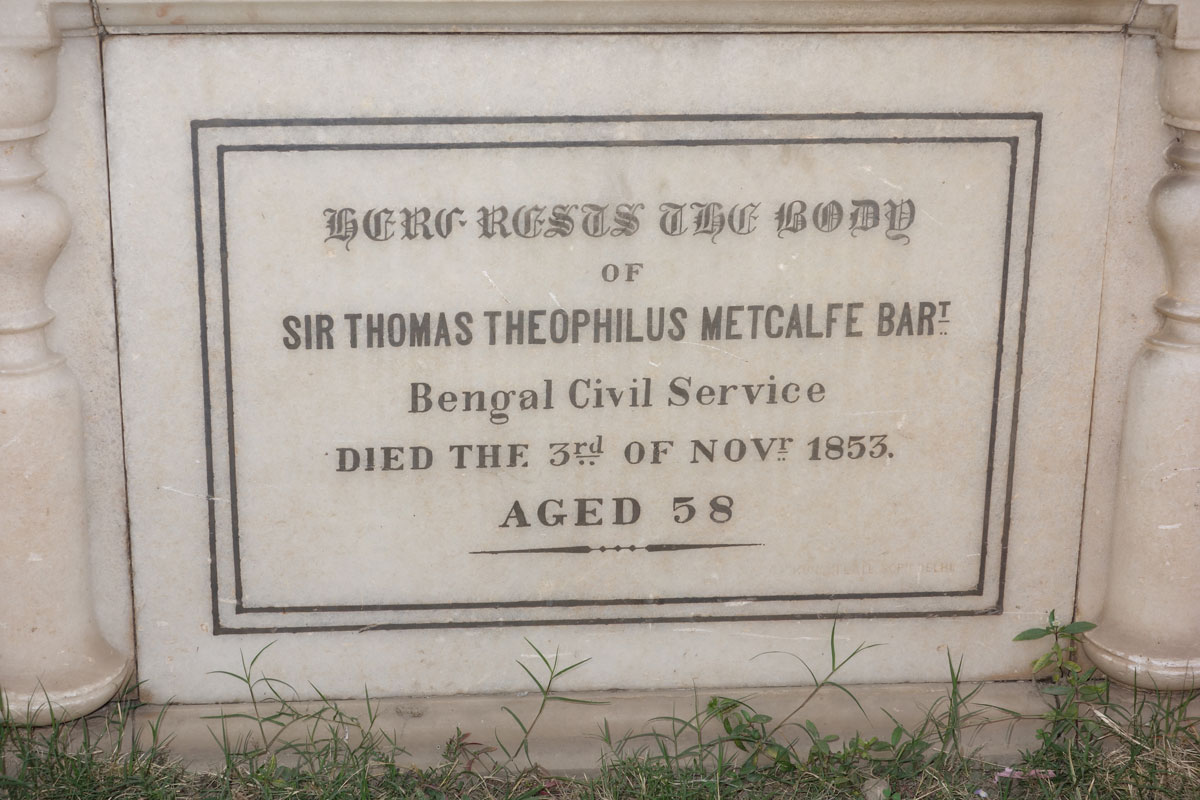 Metcalfe’s Gravestone; “Here Rests the Body” of a Person Who Was a Pillar of Delhi’s Society and Politics in His Time
Metcalfe’s Gravestone; “Here Rests the Body” of a Person Who Was a Pillar of Delhi’s Society and Politics in His Time

